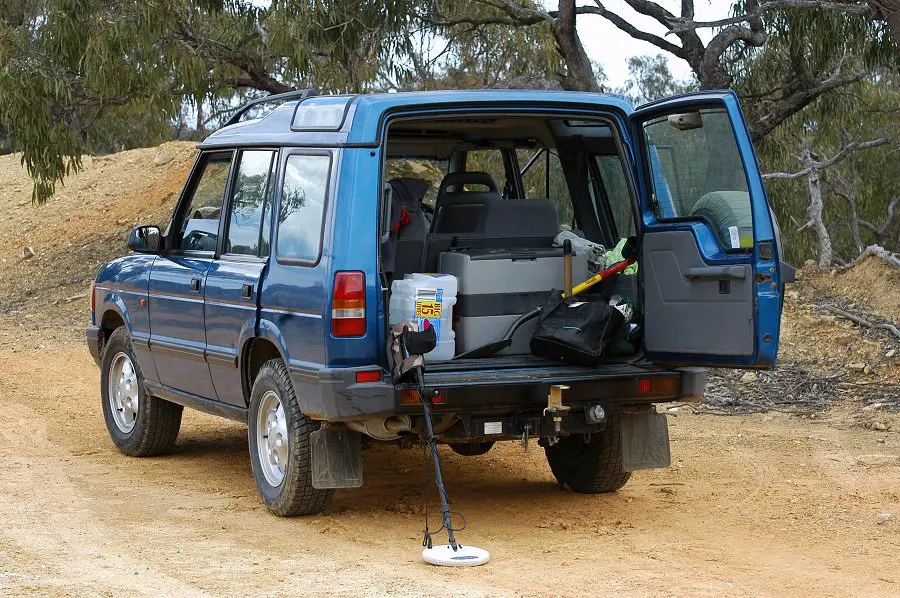
Welcome to the world of overlanding and offroading! Over the years, we have been exposed to many different people from all areas of life who share a love for traveling in their 4×4 vehicles outside the beaten path.
This article is directed toward those new to the scene and wants to ensure they stay safe while exploring this amazing planet and its natural beauty.
These safety tips are not directed toward how to handle your vehicle while trail-wheeling or rock crawling, but rather how to avoid becoming a statistic by getting yourself into dangerous situations before you hit the trails themselves.
There is an infinite number of ways something could happen out there on your travel adventures. However, using these tips as guidelines can reduce the risks and increase your overlanding safety.
Overlanding and Offroad Driving Safety Tips: Before You Hit the Trail.
Remember that every trip you take will be different, with its unique landscapes and road conditions. However, by taking proper precautions before hitting the trails, we may help avoid common potential safety hazards encountered on today’s roads and trails such as:
- Unsafe drivers.
- Animals crossing/wandering onto roadways.
- Bad weather.
- Getting lost.
By preparing for these situations ahead of time with a bit of planning and preparation, you substantially heighten your chances of having an enjoyable trip without any undue concern for your safety or those around you.
Let us all remember; it’s not how you begin life but rather how you end it that matters. Let us also keep in mind that we can help let them know about these potential hazards before they get involved by sharing this information with others.
13 Safety Tips for New Overlanders and Offroaders
It is important to note that the statistics on vehicular accidents are staggering each year, no matter where or what type of vehicle you are driving. Statistics have shown that 4×4 owners are generally safer drivers than those who do not own a four-wheeled vehicle because they self-select themselves for more responsible behavior behind the wheel.
Here are 13 top safety tips for New Overlanders and Offroaders:
- Have a Co-Pilot
- Plan Ahead
- Check Vehicle Fluids
- Inspect Your Vehicle
- Carry Adequate Clothing and Equipment
- Carry Adequate Supplies
- Check Weather Report
- Prepare for Your Adventure
- Research Trails
- Remain Flexible
- Look Ahead/ Pay Attention
- Slow Down
- Prepare Your Vehicle
Our experience has told us otherwise that first-time offroaders have caused substantial damage to their machines and other property resulting from their lack of knowledge and experience. The most important thing to remember as a new offroader is that slow and steady wins the race.
It has been said many times before, but it’s more about getting there than how fast you get there.
If you are not comfortable with your driving abilities or how your vehicle handles specific terrain, please do yourself a favor by finding an experienced driver who can take you out for a safe, enjoyable ride of discovery instead of potentially chewing up your machine.
1. Have a Co-Pilot
This is an essential safety aspect that should never be taken lightly.

Even if you’re an experienced wheeler with years of experience, having someone else out there with you to keep you company throughout the journey can help keep everyone in better spirits and more focused instead of being alone for hours upon hours on end without any interaction.
A co-pilot also comes in handy when it comes time to do some heavy lifting and work, such as changing flat tires or winching.
In fact, in some cases, co-pilots can easily take the place of a winch when using an improvised snatch strap or tow strap since it’s much easier having someone else do the pulling than trying to hold back your vehicle yourself.
2. Plan Ahead
As you become more involved in overlanding activities, you will become more comfortable with this great hobby. However, if things go wrong while out on the trails or even being stuck where no one can see you, it is always better to have a plan of action before you get into that situation.
It’s best not to assume anything when venturing out onto the trail or into the backcountry, and contact your local authorities if required when in doubt.
3. Check Vehicle Fluids
Keep an eye on your vehicle’s fluid levels, including:
- Coolant (recommended to add water/anti-freeze every 1000 miles for proper cooling).
- Brake oil (if low, add right away, or else braking will be reduced significantly).
- Engine oil (check engine light goes off at 3-4 qt depending on engine, five if going through sand/snow, etc.).
- Windshield wiper fluid (can top off as needed but keep in there if freezing conditions are encountered).
- Transmission fluid (can top off if needed, but do not overfill).
4. Inspect Your Vehicle
Ensure a proper inspection of the vehicle before departure to ensure everything is in good working order. It’s also a great idea to bring along a first aid kit on any trip and survival gear such as food rations, water, compass/GPS, etc., just in case something goes wrong on your travel adventures.

You never know what you will find out there! A pre-trip inspection keeps you prepared for those unforeseen situations that can happen unexpectedly.
5. Carry Adequate Clothing and Equipment
Preparing properly for your overlanding adventure means having the right equipment with you at all times and having a basic knowledge of first aid to care for yourself or other victims. It’s always recommended to carry a first aid kit and a survival kit with food rations, water, flashlight/solar flare kits, etc.
6. Carry Adequate Supplies
Make sure to have enough fuel on hand at all times during your travels along the trail just in case you get lost or stuck out there.
In addition to carrying extra fuel, it is also essential that if something mechanical should go wrong on the trail that you have an extra part readily available so you can fix your machine instead of being stranded out there without the resources needed to repair it properly.
If going offroading over long distances, you should carry a complete set of tools (Amazon link to Haiphaik Emergency Tools) in your vehicle at all times, along with extra parts. It’s also a good idea to have a cell phone or satellite locator if you need to call for help while out on the trail.

7. Check Weather Report
Before departing, make sure to check the local weather forecast, especially if driving across the country where bad storms can pop up unexpectedly, forcing you offroad or causing other hazards such as flooding, etc.
In addition to this, if going over land use maps and navigation software (such as MS Outlook) while planning your route by checking Google Earth satellite imagery and terrain. The more advanced GPS units will allow you to trace your desired route while cross-referencing it against topographical maps and Bing aerial satellite imagery.
8. Prepare Prepare for Your Adventure
As your skill level progresses and you become more involved in offroading and overlanding, make sure to properly prepare yourself by stocking up on some knowledge of how to travel safely across the country or carry out a backcountry adventure.
It’s always recommended that at a minimum that newbies read a general four-wheeling book if they are just getting into this great hobby.
In addition to this, those new to overlanding may also want to contact their local 4×4 club for information about aspects of offroad safety. They might as well join an experienced group of overlanders on their next trip so you can get hands-on experience from those already involved in this great hobby.
9. Research Trails
Make sure to take your time and scout out the trail ahead before you head out on any overland journey by doing some research on the trail. This will help you know what to expect, such as how rough it might be or any other potential obstacles encountered along the way while driving through unfamiliar terrain.
It’s always better to be prepared than caught off guard when you get there!
10. Remain Flexible
This is a must for anyone planning an adventure and can also help save a lot of unnecessary stress and worry if something unexpected occurs during your travels, such as getting stuck in unfavorable conditions or wrong turns, etc.
Always keep your options open and remain flexible when traveling offroad so you can change your route to avoid any obstacles or other problems while out there.
11. Look Ahead, Pay Attention
If driving on the highway, you must keep alert and avoid being distracted behind the wheel, or it could lead to an accident.
Always keep your eyes up and on the road ahead instead of staring at one point in space for too long since this may result in a freak accident such as a deer jumping across the highway and causing you to swerve into another vehicle or object without alerting anyone ahead etc.
It’s also essential that you always check your mirrors before changing lanes or merging onto another lane to ensure that it is safe and clear wherever your planned route may take you.

12. Slow Down
It’s also vital that you always remain below the speed limit at all times while driving. This is because speeding up too much will not only strain your vehicle but can lead to a loss of control which could end up causing an accident. Not to mention that speeding tickets are costly!
It’s also vital that you avoid driving aggressively or tailgating other vehicles since it can be hazardous for everyone on the road or trail.
Instead, practice defensive driving by remaining three seconds behind the vehicle ahead so if anything goes wrong, you’ll have time to react accordingly without getting stuck in any traffic jam caused by aggressive drivers willing to risk their lives safety and lives of others to push their vehicle through traffic.
13. Prepare Your Vehicle
Make sure that you take the time before heading out on any adventure and properly prepare and inspect your 4×4 for any potential problems or issues during travel, such as a blown tire, broken axle, or other severe off-road damage, etc.
It’s not always necessary, but it is recommended that all newbies read a simple how-to book about basic offroading before taking their rig into more extreme terrain conditions.
Not only this, but even those with plenty of experience will still find it helpful to learn from someone who has been there and knows what works best in those conditions. So if you want to make sure you know your stuff and always remain safe and on the right track, joining an overlanding group would be a great idea.
Always Have A Plan
Always know what risks and dangers you may face before venturing out there, such as knowing where all water crossings are for when you run into any stream or creek crossing while traveling on dirt trails, etc. Not only this but always have a plan of action ready before heading out since this can help immensely if things don’t go according to plan while you’re out on the road or trail.
This will allow everyone involved to stay calm and relaxed instead of panicking and making a mistake that can be disastrous out there. Remember, safety first and always!

